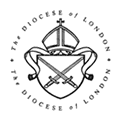Historical sources for a Statement of Significance
How to approach your research
Part one of a Statement of Significance includes various sections which require that you show awareness of the historical context of the building and congregation.
It can be rather intimidating to be faced with questions about a church that require historical research. However, there are a range of resources available to assist you in this task, and much of the material you need is more readily available than you might think. We propose that a useful process for gathering historical information to inform a Statement of Significance can be to LOOK – LISTEN – READ – RESEARCH.
Look
The church building and its surroundings are likely to be very familiar to you; however, by looking carefully with inquisitive and informed eyes, you can discover a great deal that might provide an excellent basis for your Statement.
- When was it built? A foundation stone and/or dedication tablet may well quickly give an exact date, but architectural style and other evidence (such as the earliest dates of monuments and other artefacts). This information might suggest which archival sources you should look at (for example, if the building is Victorian, you will need to consult the files of the Incorporated Church Building Society.
- Has it been significantly extended, altered or rearranged during its history? If so are there clues as to when and why?
- What ancillary buildings are there? (Hall? Sunday school? Vicarage? Day school?) What was their original purpose and how might this have changed? (For example some original schools are now church halls, with the school itself moved to a different site.)
- How does the church relate to its physical surroundings? Is/was it on a main road or a back street? Do/did a lot of people live nearby? Does it look like a focal point for a community, or a building that is easily ignored?
Listen
Longstanding members of the congregation might be able to tell you a great deal about both the social and material history of the Church. By conducting oral interviews you might be able to find our about important memories associated with the building. Do not accept what you are told uncritically: interviewees may well have particular viewpoints or prejudices, or simply have been misinformed. On the other hand theses perspectives on the past are to be valued and affirmed as part of the collective memory of the church community, and are likely to give you valuable insights. See here for more information about oral history.
Read
You may well find that there is already published work available on the history of the church. In many cases a previous history or guidebook will have been produced, perhaps written as early as the nineteenth century. You might find a reference to such a publication in the British Library integrated catalogue or the Bibliography of British and Irish History, to which you would need to subscribe. In many cases you will find that the publication is in the possession of the church; however, if not you should be able to locate a copy at your local borough archive, Lambeth Palace Library or the British Library.
Another important published resource can be the Victoria County History for Middlesex, which closely corresponds to the area of the present-day Diocese of London. Copies are available in reference libraries or online at www.british-history.ac.uk (from the home page click on ‘London' and then on ‘Victoria County History: Middlesex').
Research
The final stage of the process is to consult the original sources relating to the history of the church. There is a whole range of material to consult, including official minutes, building plans, letters from clergy or laity, visitation returns and parish magazines. Some of the material is available online, and much is easily accessible in London’s various libraries and archives. However, before beginning to search online or heading off to such repositories, it will be well worth checking what material is immediately available to you. Many parish churches have not yet deposited their material in archives, so you could find sources on the shelves of the vestry or in the possession of the churchwardens. Also, members of the church might have useful material; for example, has someone kept a parent's or grandparent's diary or photograph album recalling church life in the earlier twentieth century?
It is important to be aware that parishes vary a lot in their history and hence the extent and kind of resources available for studying them. In the City of London the numerous surviving medieval and Wren churches are testimony to the dense population of earlier centuries, but now in general lack resident parishioners. A parish originating in the medieval era originally had extensive civil as well as religious functions, and in outer London its church, probably in an historic village or town centre – such as Finchley, Hammersmith or Harrow - would originally have been a centre of worship for a large area. On the other hand, the majority of churches in suburban London were built in the nineteenth century or later in response to population growth and urbanization, and these parishes were created with solely ecclesiastical and spiritual functions. Such churches sometimes had a significant prehistory before the creation of their parishes as ‘chapels of ease' – meaning they were built for the ‘ease' of significant populations living at a distance from the parish church - or as mission halls within the medieval mother parish.
If ‘your' parish is a post seventeenth-century foundation it will also be useful at an early stage to look up the original Act of Parliament, or more probably Order in Council, setting it up. This can be found in the London Gazette, available online at www.london-gazette.co.uk – you should use the ‘Advanced Search' facility and narrow the date range as much as you can from other information available to you.





